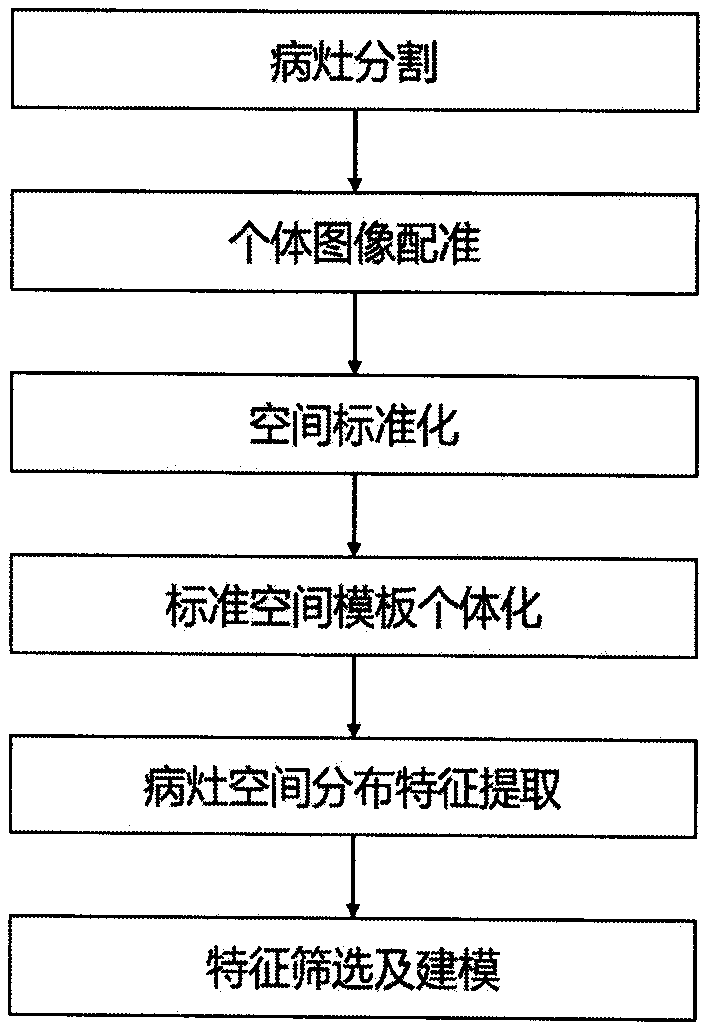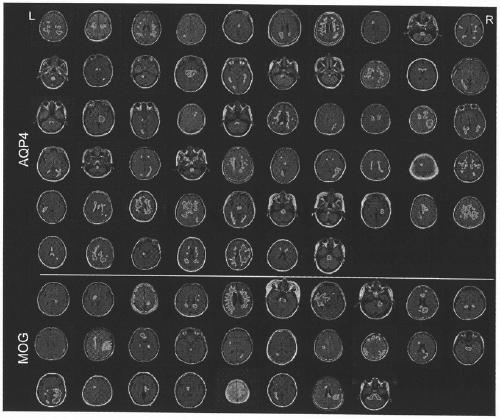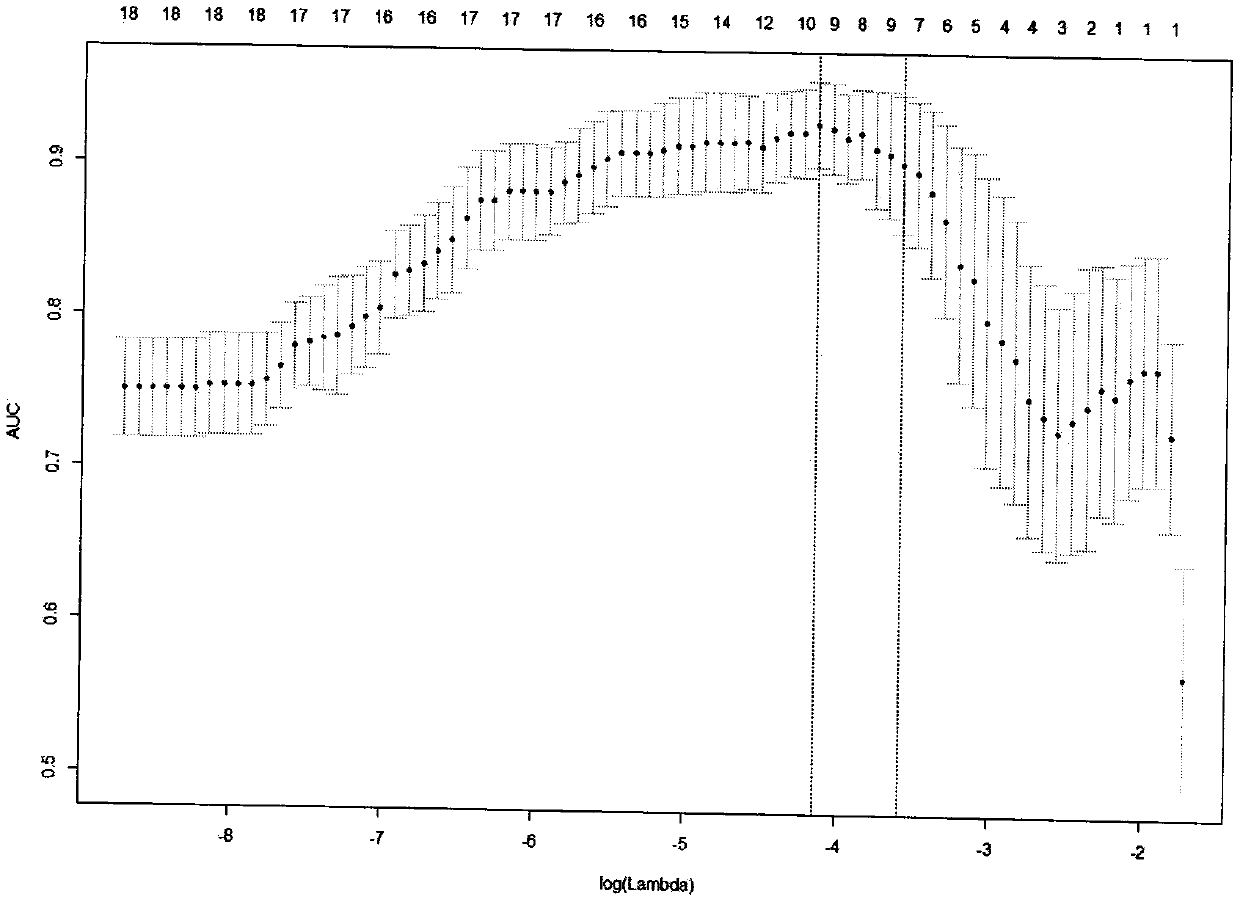Brain lesion image spatial distribution characteristic classification and identification method based on magnetic resonance imaging
A magnetic resonance imaging and distribution feature technology, applied in image analysis, image enhancement, image data processing, etc., can solve the problems of insufficient objectivity, limited features, and low efficiency
- Summary
- Abstract
- Description
- Claims
- Application Information
AI Technical Summary
Problems solved by technology
Method used
Image
Examples
Embodiment 1
[0036] Example 1 Classification and identification of spatial distribution characteristics of brain lesion images of MOG antibody-positive and AQP4 antibody-positive NMOSD patients
[0037] Classification identification:
[0038] 1) Select the clinical MRI images of MOG antibody-positive and AQP4 antibody-positive NMOSD groups, 28 cases and 57 cases respectively, and each case includes FLAIR images as "lesion display images" and T1-weighted images as "brain structure images" ;
[0039] 2) For the FLAIR image, use MRIcron to segment the whole brain lesion and save it as a binary image as a "lesion image";
[0040] 3) Use SPM to rigidly register the T1-weighted image of the individual with the FLAIR image;
[0041] 4) Use SPM to register the individual T1-weighted image to the MNI standard space; apply the transformation parameters to the FLAIR image, and select a threshold of 0.5 to obtain a binarized "standard space lesion image";
[0042] 5) Use the individual space "lesio...
PUM
 Login to View More
Login to View More Abstract
Description
Claims
Application Information
 Login to View More
Login to View More - R&D
- Intellectual Property
- Life Sciences
- Materials
- Tech Scout
- Unparalleled Data Quality
- Higher Quality Content
- 60% Fewer Hallucinations
Browse by: Latest US Patents, China's latest patents, Technical Efficacy Thesaurus, Application Domain, Technology Topic, Popular Technical Reports.
© 2025 PatSnap. All rights reserved.Legal|Privacy policy|Modern Slavery Act Transparency Statement|Sitemap|About US| Contact US: help@patsnap.com



